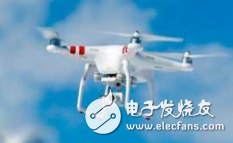For many sudden illnesses, the first few minutes of the disease are the golden time of the rescue. If you can't get proper care during this time, the patient will easily die. Through the use of drones, the number of patients who receive timely assistance can be greatly improved. At present, the success rate of non-professionals who use AED is about 20%. If you add personalized instructions and communication help on the drone, the success rate can be increased to 90%. Extending today's emergency infrastructure with drones will undoubtedly help us save more lives.

The medical drone market is poised to grow rapidly in the future.
In recent years, drones have won the favor of many capitals. The potential in the field of logistics has made many logistics and e-commerce companies rush to enter the market and accelerate the development of the drone logistics system. However, before the large-scale popularization of logistics and transportation, drones took the lead in effective application in the medical field.
It is reported that the UAV can be combined with the medical field and originated from a medical emergency in foreign countries. The medical institution uses the drone to urgently transport medical supplies to provide first aid to the patient. Today, the use of medical drones is accelerating.
African national medical drone transport develops rapidly
In Africa, due to the backwardness of road infrastructure, medical assistance is often trapped here and loses the best time. A startup in Silicon Valley has partnered with the local government to use drones to airdrop medical supplies. The company began to drop blood packets to remote hospitals in Rwanda in October 2016 and recently announced that it will expand its operations to Tanzania next year.
It is reported that the distribution in Tanzania in 2018 will include important medical supplies such as blood, vaccine, IV tube, suture, anti-malarial drugs, AIDS drugs, etc. It is estimated that 120 drones in 4 distribution centers will cover more than 1,000 health care institutions. Up to 2000 shipments per day can be completed.
The medical staff only needs to place an order through the matching app. The staff will pack the medical supplies into the “abdominal†of the drone and then launch them into the air. The drone can usually fly to its destination automatically via its own GPS within 30 minutes. In order to save battery life and reduce wear, the drone returns to the distribution center directly after delivering the goods with a parachute.
Switzerland launches medical drone distribution service in the city
In Africa, medical drones are more or less in urban and rural areas or in remote areas. In Switzerland, the local postal service is planning to apply it to the distribution of medical supplies in urban hospitals.
Swiss Post said that after completing a series of drone delivery tests this year, it hopes to use drones to transport medical supplies to the two major hospitals since 2018. Since March, Swiss Post has cooperated with the American drone company Matternet to use the drone to transport about 70 items between the two major hospitals.
According to Swiss Post, “As long as the drone meets all the stringent requirements for safety, usability and reliability, the two hospitals will use drones to transport items every day.â€
Nevada uses medical drones for emergency assistance
Another major advantage of medical drones is the temporary emergency assistance relative to transporting medical supplies to fixed locations. Flirtey, Nevada, USA, is preparing to work with a private non-profit medical service provider covering the northern part of the state to launch a drone-carrying (shock) defibrillator to rescue patients with cardiac arrest.
An automated external defibrillator carried by a drone is a portable device that can deliver an electric shock to the heart through the chest. This device is intended for use by non-medical personnel, and people around the patient can begin to care for the patient while waiting for the medical staff to arrive.
In a written statement, Flirtey CEO Matthew Sweeny said: “To send aid to the people who need it, this is one of the most important uses of drone delivery technology. We believe that our technology will be in the future. Save more than 1 million lives in ten years."
The future of medical drones
Compared with the complexity of the logistics network system, the transportation route of medical supplies is relatively simple, and the use of drones to transport errors is lower, which is why medical drones can develop before logistics drones. For the medical industry, the most important point is that first-aid is generally time-critical. Once a shortage of drugs occurs, the drone can maximize the golden time of saving and save the patient's life as much as possible.
Therefore, in view of the huge advantages of medical drones in telemedicine rescue and medical supplies transportation, its future application is expected to expand further. However, from the current stage, the technology related to medical drones has not yet matured, so the most important thing is to ensure safety, and it is necessary to strictly avoid the interference of medical drones on the aviation system.
In addition, the carrying capacity and endurance of medical drones also have a lot of room for improvement. At the same time, the maintenance and repair of drones is no small challenge. These require medical drone companies to solve one by one in the next development process. In the future, with the improvement of UAV regulatory laws and the further maturity of market applications, the medical drone market is expected to continue to grow, driving the industry to flourish and providing timely services to more patients.
3D Printer
Shenzhen Yidashun Technology Co., Ltd. , https://www.ydsadapter.com